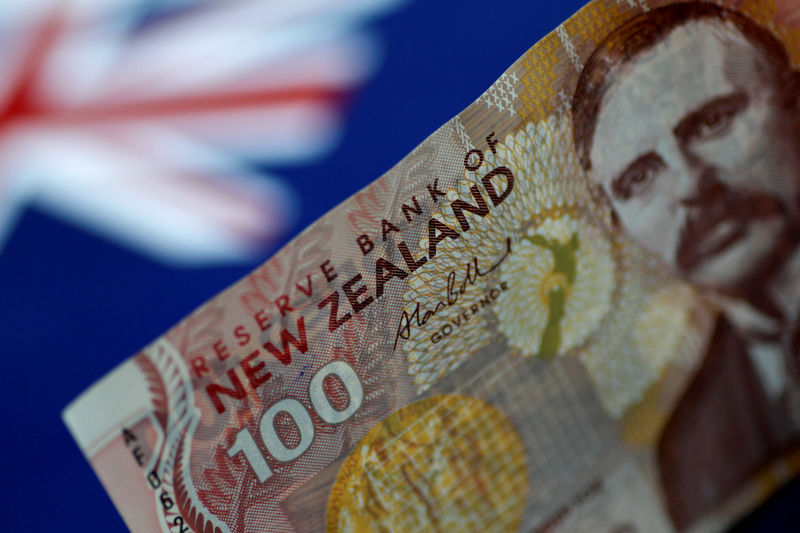By Swati Pandey
SYDNEY (Reuters) - Central banks in Asia, Australia and New Zealand have joined a brewing global currency war by slashing interest rates and pledging to keep them down, worrying markets over the risk of a chase to the bottom.
Policymakers around the world are struggling with lukewarm inflation and tepid wage growth even as unemployment rates in many developed economies have fallen to record lows.
The Sino-U.S. trade war has complicated matters further by raising fears of a world recession, prompting financial markets to price in aggressive easing by the U.S. Federal Reserve.
In Asia-Pacific, some central banks are attempting to get ahead of the curve to soften the impact on their currencies and economies from potentially steep U.S. rate cuts and a weaker dollar.
On Friday, Australia's central bank chief acknowledged that major reason for cutting interest rates was to weaken its currency. The Aussie dollar , the fifth most-traded currency in the world, has lost 3.5% so far this year.
"A higher exchange rate would be hurting many, many sectors across our economy," Reserve Bank of Australia (RBA) Governor Philip Lowe said, referring to the country's export-driven agriculture, mining, tourism and education sectors.
The RBA made surprising back-to-back cuts in June and July to reduce its cash rate to an all-time low of 1%. Lowe has subsequently left the markets in no doubt by signalling the need for rates to remain lower for longer.
(For a graphic on 'Developed market currencies against the dollar', click https://tmsnrt.rs/2MLjdFP)
GLOBAL RACE
Earlier this week, the Reserve Bank of New Zealand (RBNZ) slashed interest rates by a larger-than-expected 50 basis points. As a result the kiwi dollar fell 1.2% to a 3-1/2-year trough.
RBNZ Assistant Governor Christian Hawkesby told Reuters weakening the export-reliant economy's currency was part of the reason for the hefty rate cut.
The RBNZ also floated the idea that negative interest rates were a possibility in a bid to keep downward pressure on its currency, the tenth most traded in the world.
The RBNZ's shocking move sparked fears of a global recession, sending the Aussie to decade lows on the day while U.S. Treasuries rallied to record highs and gold surged past $1,500 an ounce.
Investors soon began pricing in similar moves by other central banks as the RBNZ surprise came even as it admitted it was meeting its employment and inflation mandate.
"The world race to ease rates is clearly under way," said Marshall Gittler, Cyprus-based chief strategist at ACLS Global.
"If a central bank that is currently meeting its employment and inflation targets is talking about negative rates, quantitative easing and who knows what else, what should be the response of a central bank that isn't meeting its employment and inflation targets?"
Short-term yields on Australian and New Zealand sovereign debt are now below their respective cash rates, indicating prospects for further easing. (AU2YT=RR) (NZ2YT=RR)
Financial markets expect the European Central Bank to cut rates at its September meeting and to restart quantitative easing while the U.S. Federal Reserve too is seen cutting three more times over 2020 after a 25 bps "insurance" cut last month.
In Asia, the Reserve Bank of India (RBI) slashed rates by a surprisingly larger 35 bps on Wednesday to 5.4%, its fourth cut this year while the Bank of Thailand unexpectedly lowered rates to 1.5%. Philippines' central bank (BSP) followed suit on Thursday and left the door wide open for further reductions.
(For a graphic on 'Interest rates in developed economies', click https://tmsnrt.rs/2YzChOv)
NEW FRONT
The RBNZ's hefty cut came only days after U.S. President Donald Trump hit China with 10% tariffs on $300 billion imports, spooking investors globally. In response, Beijing allowed its yuan to hit record lows in offshore markets, prompting Trump to label the country "currency manipulator."
Trump next repeated his calls for the Fed to cut interest rates more steeply and stop its "ridiculous" quantitative tightening.
"These actions indicate the new front in international competition is foreign exchange markets," said Michael McCarthy, Sydney-based strategist at CMC Markets.
Australia also risks becoming caught up in any rounds of competitive devaluations as its economy's biggest export market is China.
Economists are concerned the latest round of "insurance" cuts are leaving central banks with limited room to ease policy further if and when things get dire.
Last week, the German 30-year government bond yield (DE30YT=RR) slipped into negative territory for the first time ever. Already, $14 trillion of outstanding debt around the world is now yielding negative returns.
Investment manager Pacific Investment Management Co (Pimco https://www.pimco.com.au/en-au/insights/blog/interest-rates-naturally-negative/?utm_source=subscription_email&utm_medium=email&utm_campaign=3826340-SMS%20Article-Interest%20Rates:%20Naturally%20Negative&utm_term=Token%3A7XQwZ%2FMsnHnt6dRA%2BppdUzI%2FeMKnACTfZmIpqRhX0guluPYdlNY%2FDO9sN6ggynwSblYE7M5ysf5cfwjTOep31A%3D%3D&utm_content=visit%20link&)believes negative yield in the United States was no longer an "absurd" idea as an economic slowdown and the trade war depress interest rates.
The Fed's effective rate is 2.15% currently while a 10-year U.S. Treasury note is returning 1.68%.
"Recent developments have increased the odds, in our view, that a 'mid-cycle adjustment' of the fed funds rate similar to the mid and late 1990s, when the Fed cut rates three times, may not suffice to stabilize growth," Pimco's global economic advisor Joachim Fels wrote in a blog post on its website.
"If the Fed cuts rates all the way back down to zero and restarts quantitative easing, negative yields on U.S. Treasuries could swiftly change from theory to reality."
